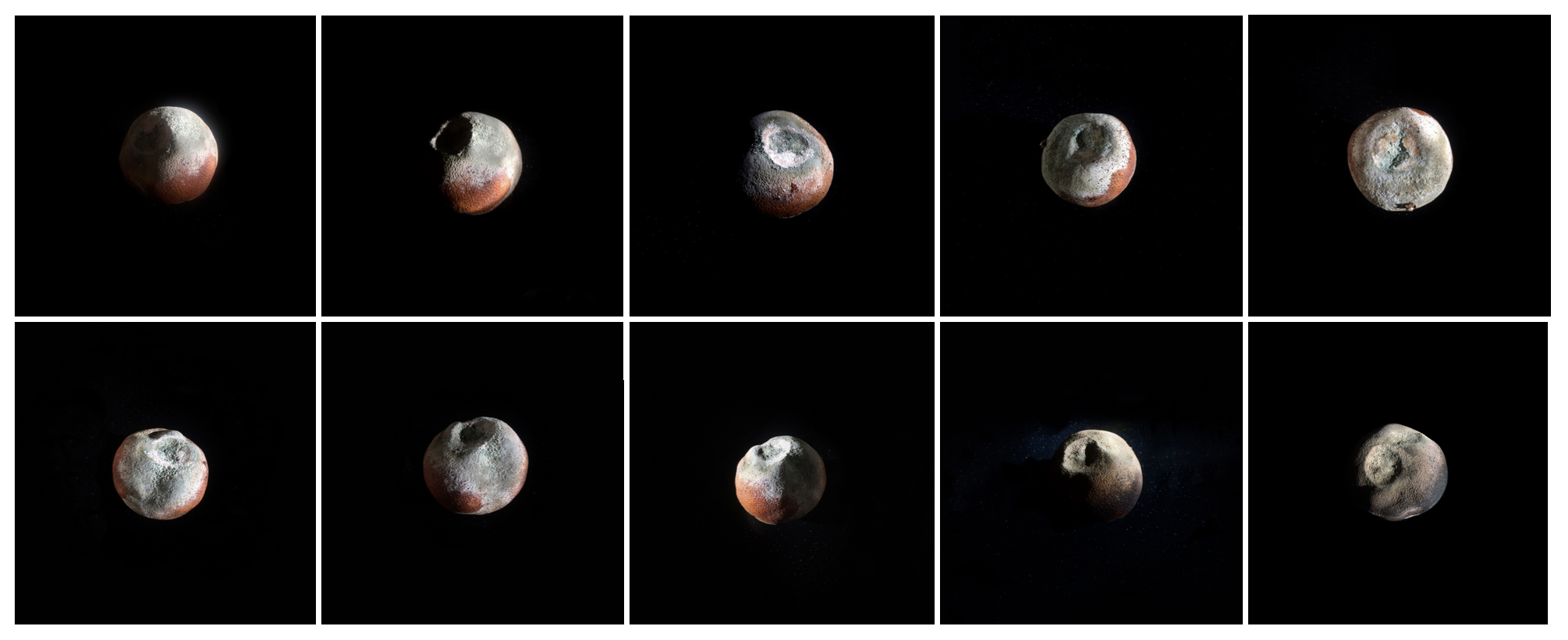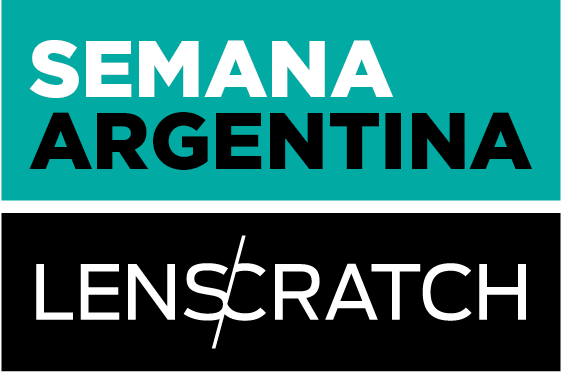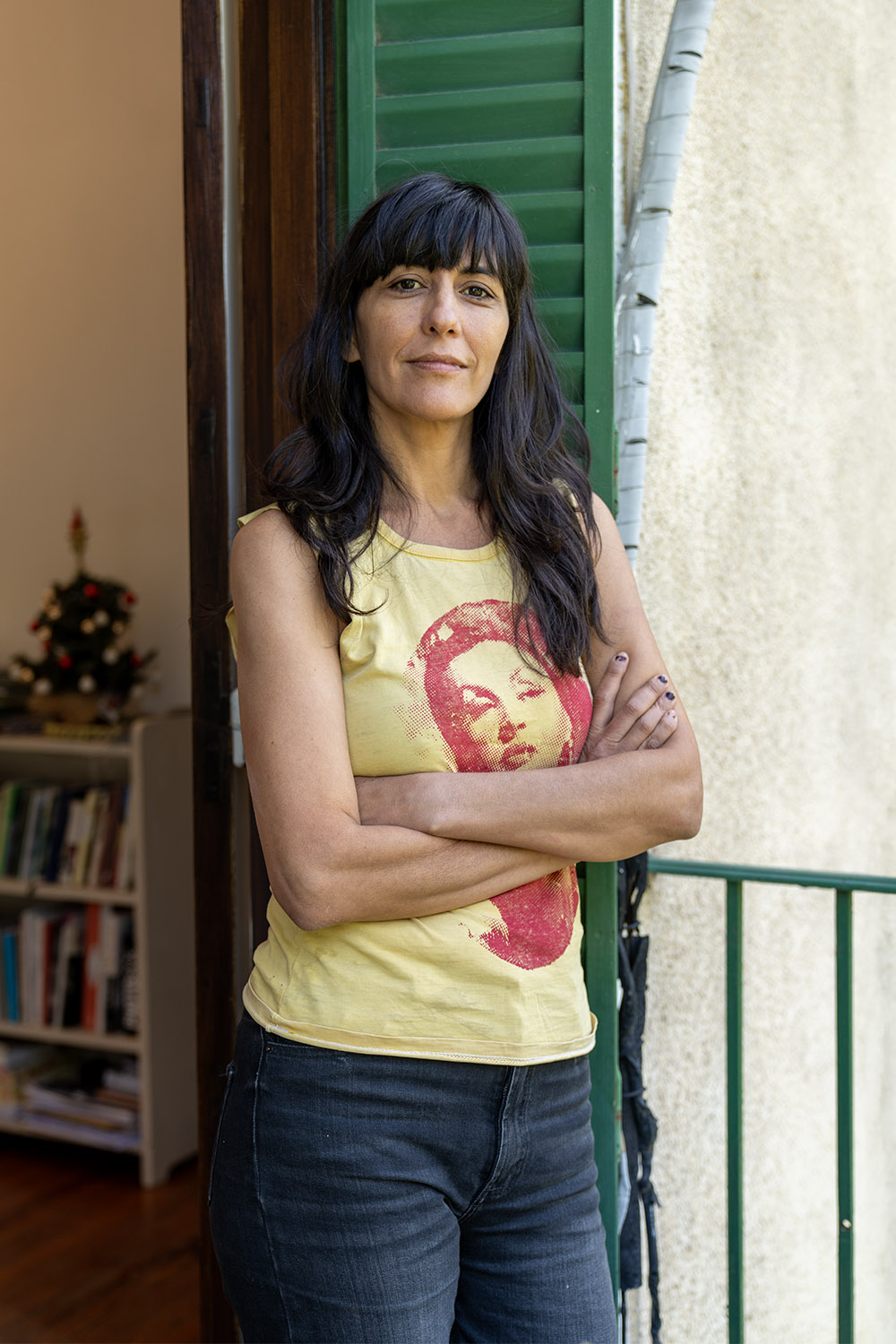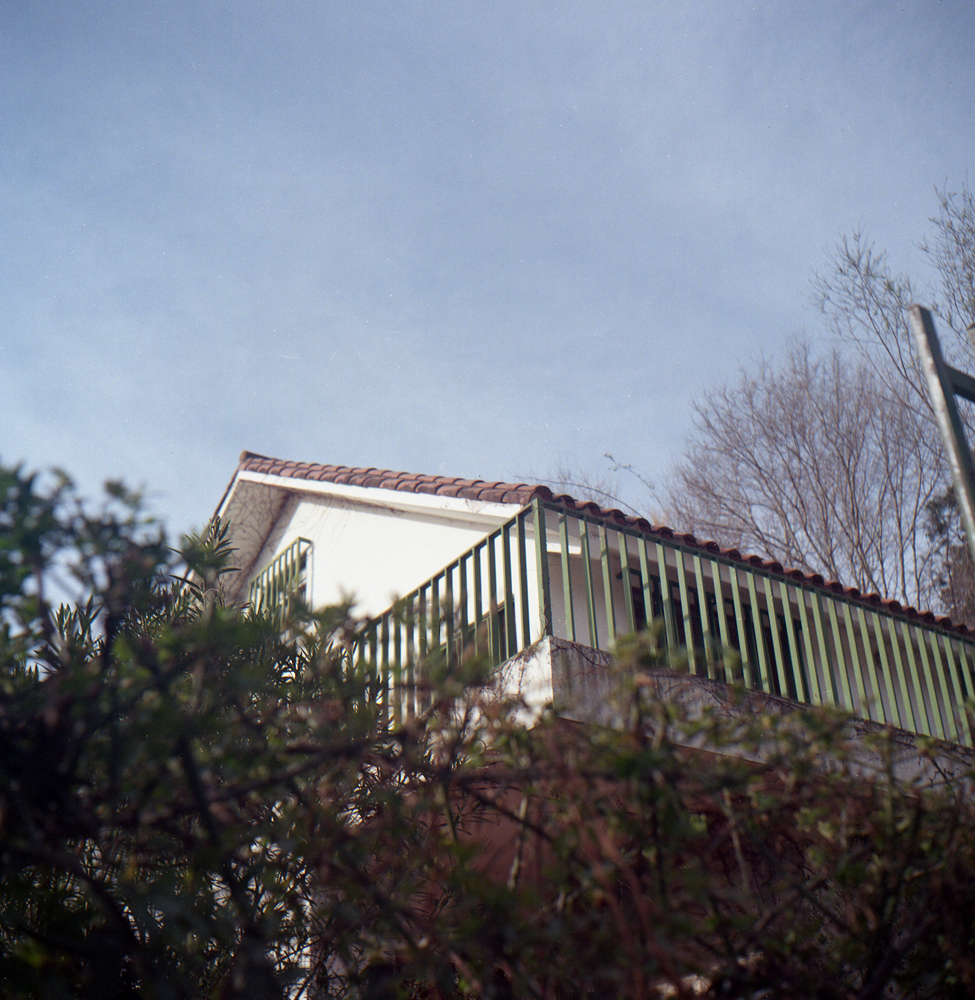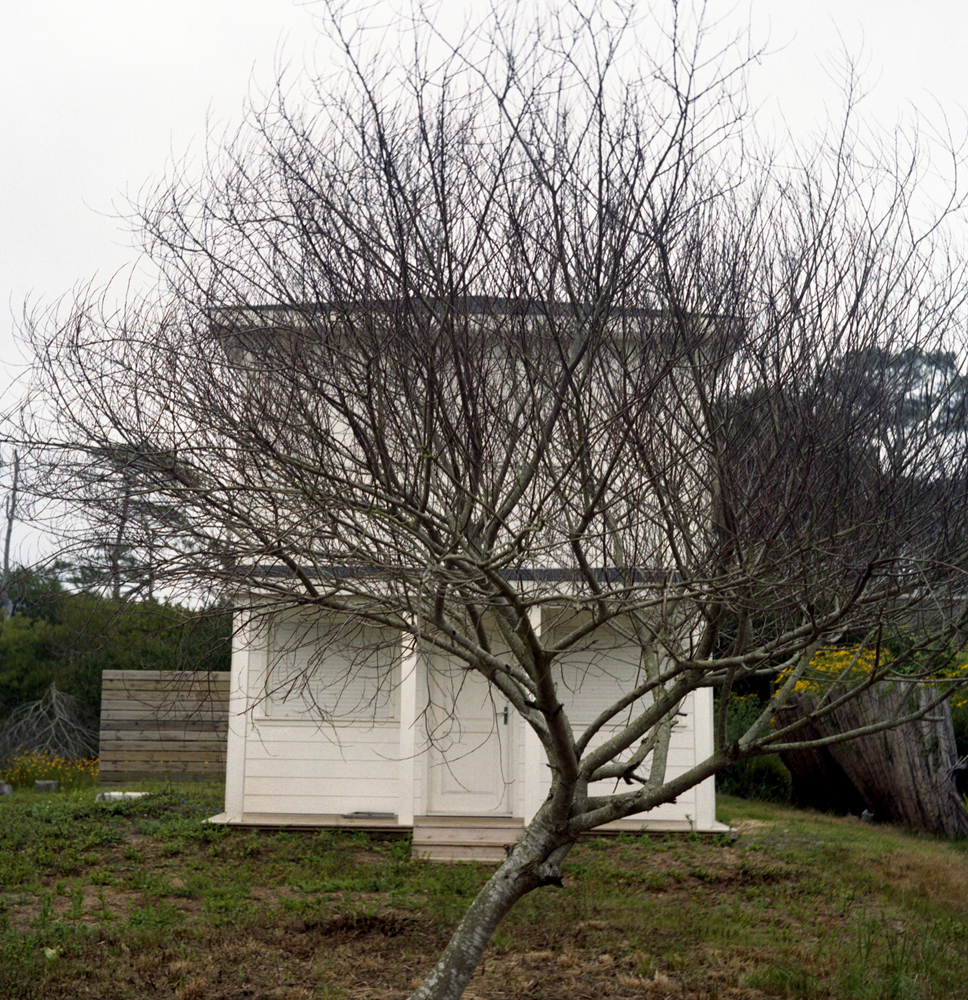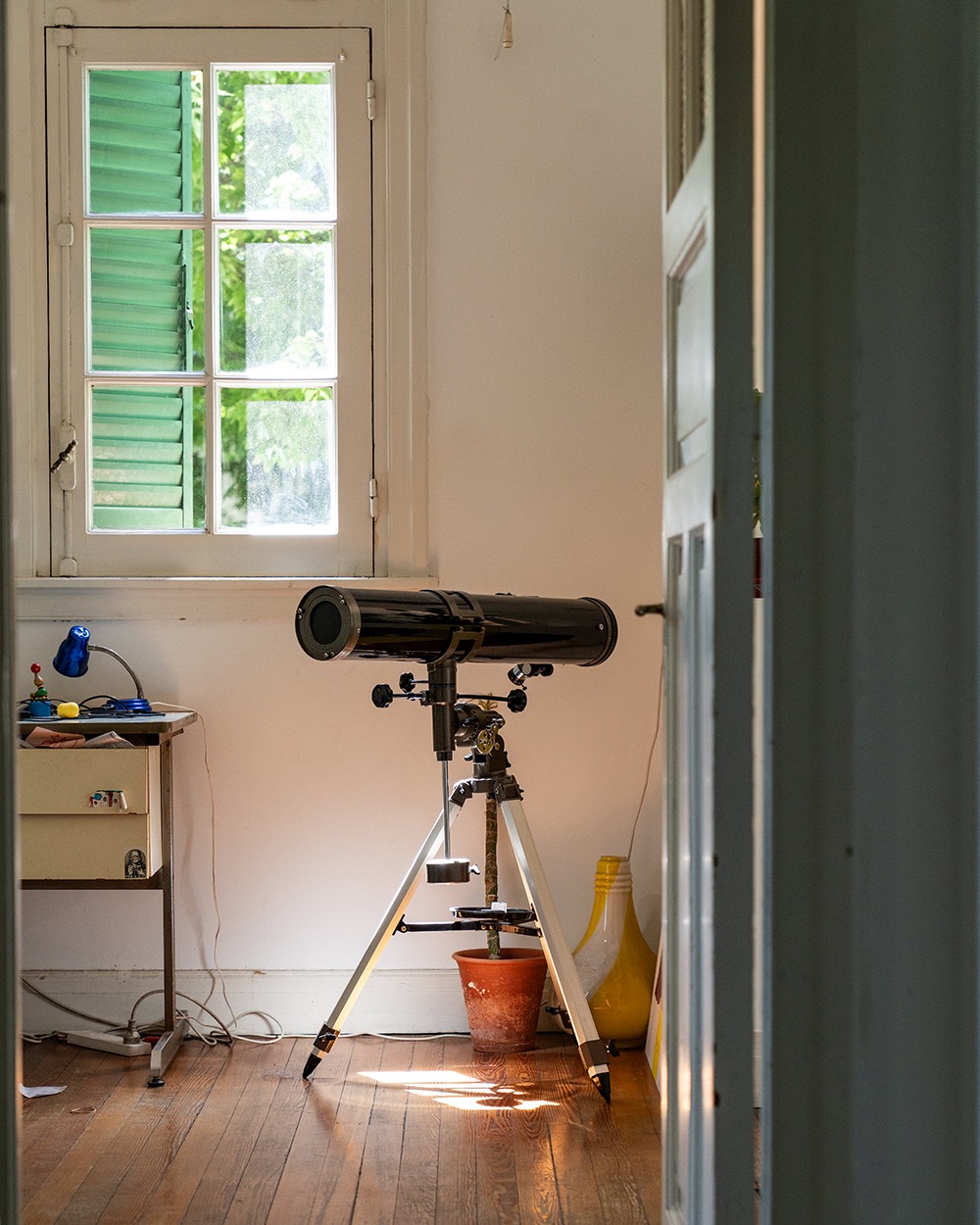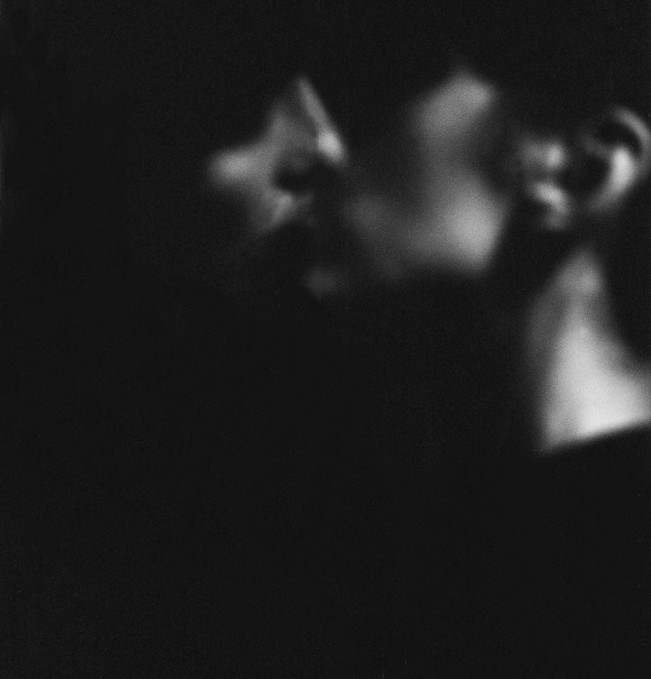Love and Loss in the Cosmos: Valeria Sestua In Conversation with Vicente Isaías
For the second installment of our Argentine Week, Valeria Sestua and I met at her apartment in Chacarita, Buenos Aires, back in January, where we talked about her incursion in photography and fascination with death, from her early childhood to the acclaimed artist and educator she is today. Her highly anticipated project, Un Montículo de Pequeños Cristales (A Mound of Tiny Crystals), is set to be encapsulated in a photo book this year.
Sestua’s wide-ranging exploration of death through her ambitious project takes us through an epic poem about the cosmos. Navigating the subject from various perspectives: animal decomposition, astrophotography, creative writing, and the use of archival and appropriated images, Sestua’s media assemblage is an odyssey full of visual poetics and fascinating anecdotes — both historic and diaristic.
For those of us whose lives have been marked early on by the losses of our loved ones, the project will resonate profoundly with its profound philosophical inquiries about the essence of being. For those that have not yet experienced it, a reflection on death that challenges the taboo and fear that often surrounds it in our culture, can only but foster a deeper and more personal understanding of the subject for the reader.
Valeria Sestua is a photographer and educator who trained as a photographer at IMDAFTA, the Avellaneda Institute of Photographic Art, in 1998. She has participated in author photography workshops coordinated by Carlos Bosch, Julieta Escardó, and Lorena Fernández. Since 2009, she has been involved in clinics by Adriana Lestido, completed Proyecto Imaginario I and II, received scholarships in PAC PHOTX and in “Escuchar la Fotografía,” a residency organized by the Arte x Arte Foundation. Since 2009, she has been teaching various workshops related to photography and writing for artistic projects. She is a coordinator at Proyecto Imaginario, a training platform for photographers and visual artists.
In 2021, she was invited to be part of BIENALSUR, and her work Mutante (Mutant) was exhibited at the Dionisi Palace in Córdoba. This work also received the Beca Creación scholarship in 2021 and 2022, as well as patronage in 2020. Her works “Mutante” and “Under the Stone” were selected in the portfolio review of FIFV, the Valparaíso International Photography Festival in Chile, and in Clap! organized by FoLa, between 2020 and 2018. She was selected in the National Salon of Arts 2015 and in the Ayerza stimulus award 2014. She has participated in numerous group exhibitions with colleagues and friends. She recently published her first book La Edad Justa (The Right Age) with Analía Couceyro by Documenta Escénicas. Her project Un Montículo de Pequeños Cristales (A Mound of Tiny Crystals) will be published by MetaNinfas. She lives and works in Buenos Aires.
Follow Valeria on Instagram: @valeriasestua
Un Montículo de Pequeños Cristales
(A Mound of Tiny Crystals)
If we seek the etymology of the verb “to ask,” we will find the Latin word “precuntare,” which derives from “contus.”
“Contus” is a rod, a tool used by sailors to sound the bottom of a riverbed. Perhaps, then, asking is not the pursuit of an answer, but an attempt to comprehend the depth of things.
Sometimes I think that everything in my life began at the age of eight.
At that time, I lived in a place where births and deaths happened routinely. The backyard garden and the forest across the street were the spaces where I laid to rest every bird, cat, and dog that died near me.
Graves with stones, with flowers, with names, without names.
I was interested in what happened after death, and in my greatest curiosity, I decided to leave a dog on the ground instead of burying it.
It was a rather large animal with cow-like fur, black and white. I left it there so I could see. To go back again and again to see and smell.
The process is not swift, but by the second day, I no longer recognize it. Swollen, lips retracted, belly round.
The body opens, revealing what is born and lives inside. Iridescent rainbow colors appear in some parts of its inverted hide, the smell fills everything.
Its bones retain their primal shape. It is understood to be a dog, but never which one.
At dusk, from the same forest, the starry sky could be seen. The southern constellations appeared whole, and I was always waiting for the shooting stars. During some moonless night, especially in winter, a few small nebulae would appear.
Nebulae and the bodies of animals as they decompose share several chemical elements.
Phosphorus, sulfur, calcium, nitrogen.
Nebulae are the result of the death of a star.
So.
To do here what I did there, photograph it, write about it, and keep asking.
Vicente Isaías: Valeria, thank you for having me. I love this neighborhood! Where are we?
Valeria Sestua: Chacarita. Near the Chacarita cemetery.
VI: Wonderful. Tell me, how did you first get into photography?
VS: I started studying in ’97 and finished in ’98, but I was much younger. Then, due to personal reasons, I hardly took any photos for almost ten years. I dedicated myself to other things, did some traveling, too.
VI: And during those ten years when you weren’t taking photos, did you pursue art in any other form?
VS: No, nothing at all.
VI: What made you come back to it?
VS: Longing. Feeling like I had lost at least half of myself by not being with photography. I could live, I could function, and even be happy at times. With friends, lovers, travels… I don’t know, fun stuff. But there was always a part where I knew I wasn’t living or trying to live with something more complete.
VI: And did photography provide that for you?
VS: Well, yes. Photography because that’s what I decided it was going to be, in a way. My connection with art isn’t a tool, but it’s the tool I enter with, and then I encounter other elements. … [My old understanding of photography] was more about visual documentation. I still do it. With the phone, it’s inevitable to document. But [now] I take many fewer photos. … Lately, I don’t think of projects as “artistic projects,” but rather as some kind of response to a need that comes from somewhere else. Now it’s more about concepts, ideas. Then the photo comes much later… Much, much later.
VI: I’m interested to know what were the first themes you explored when you returned to photography, considering what you said earlier about feeling incomplete.
VS: Perhaps my first project with greater impact for me [was] Bajo la Piedra (Under the Stone) — a series of photos taken where I grew up, in a small city in Córdoba, here in Argentina. After three or four years of documentation, organization, and writing, it made me realize that it was also a tribute to my deceased brother. The places that meant the most to me were those where I shared moments with him.
At that time, I was tired of being emotionally attached to this place. I didn’t want to constantly think about [him]. I was always living in parallel and wanted to be more connected to what was happening here, which was my son’s growth. He was very young, and I wanted to be there for him. I didn’t want to be thinking about the past all the time.
So I decided that if I was afraid of forgetting — that’s why I was constantly remembering — I would go and make a record just for myself of every place that was important to me when I was young. I wanted to have these memories in a little box that I could turn to whenever I wanted and could connect with what was happening to me. All that record is done in medium format.
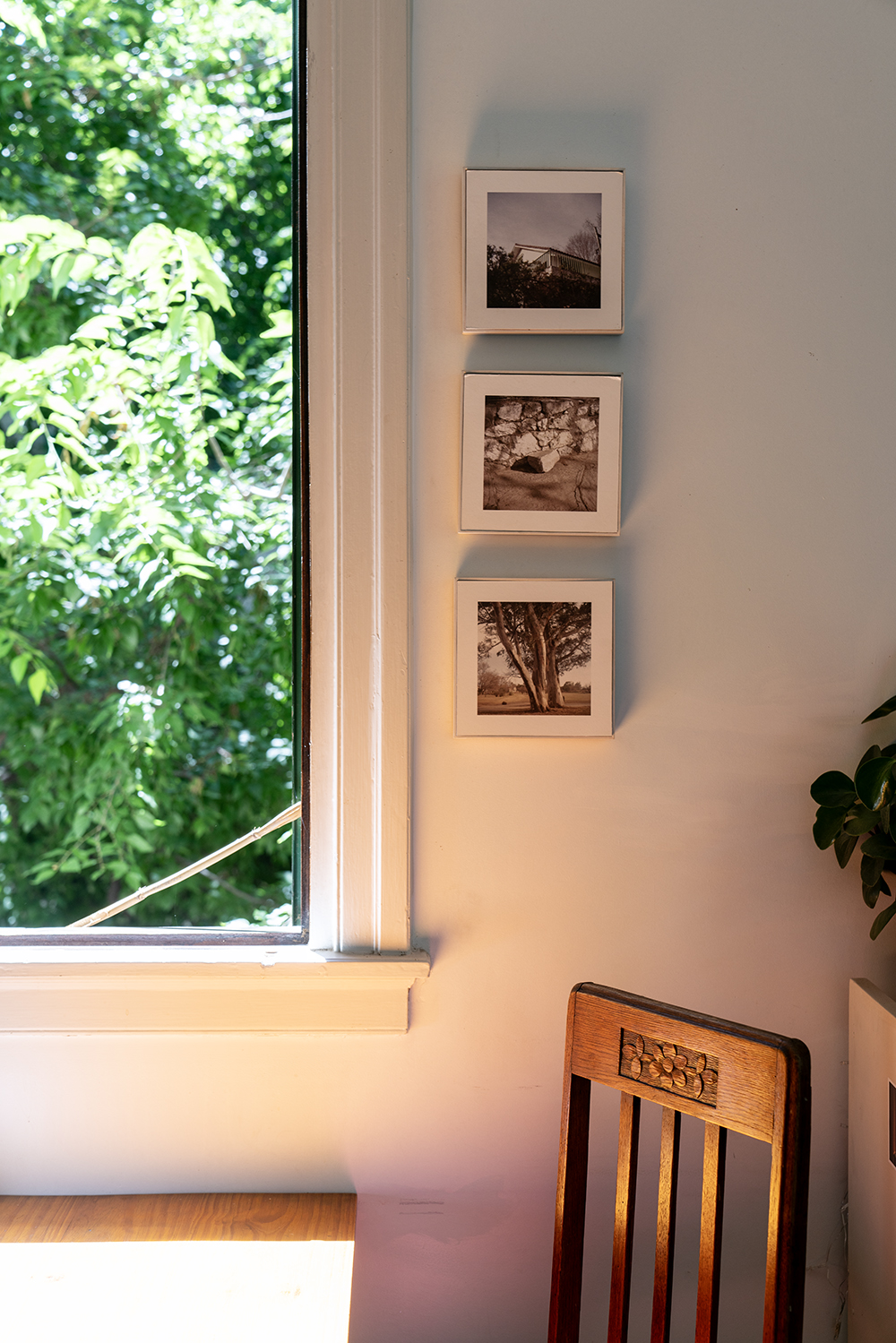
Tres fotografías de la serie “Bajo la Piedra” en la sala de estar de Valeria Sestua en su antiguo departamento en Chacarita. ©Fotografía por Vicente Isaías
VI: So you were in that transitional moment, compiling memories to move forward, but also trying to let go of them. What happened after you freed yourself from them?
VS: Approaching this project from the perspective of such a significant loss, which marked a before and after in my life, was the starting point for my next work on death, Un Montículo de Pequeños Cristales (A Mound of Tiny Crystals), which arises from a question I asked myself as a child, one that many children ask themselves when they realize their own mortality, when they discover that someday they, their parents, their dog… will die. Suddenly you realize that things have an end, that people have an end, and that’s important news for our ability to process. From a young age, I was fascinated by the topic of death, observing how nature handles the disappearance of life. This curiosity was always present, latent.
VI: Death, photography, permanence, and memory. There’s a great nexus there.
VS: Photography has an intrinsic connection to death. For example, when documenting someone who has passed away, the question arises of what it means to keep their image alive, to preserve the memory of a person or something. Photography is always related to death, whether of a past or a specific moment. It’s a record of something that no longer exists, something that will never return; it is, essentially, like death itself. This process seems extremely fascinating to me.
VI: How does A Mound of Tiny Crystals approach such a profound theme as death, and how has the use of photography changed since your beginnings?
VS: My interest in the project lies in exploring different ways to reflect on death, not simply through images or photographs. I wonder what I can capture, what occurs to me to record, not just how an animal dies or what happens at the site of its death. How does this affect the environment? What happens with the stars? Now it’s mostly through research. Additionally, I rely on many archival images, not just direct records. My method usually starts with an interest in a topic, followed by extensive reading that includes literature and, if relevant, science. In this case, I reached out to paleontologists to understand the process of body decomposition, its chemical impact, and how it enriches the soil. Then, I communicated with astrophysicists to investigate what happens after the death of a star, how nebulae form, their chemical components, and the creation of new planets and solar systems.
VI: Could you delve further into the lines of research of A Mound of Tiny Crystals?
VS: Of course, I had two lines of research and work that ran parallel to each other. On one hand… Well, actually, there are three lines… Four.
VI: It’s always like that, isn’t it? (laughs)
VS: Exactly! (laughs)
VI: Let’s break it down.
VS: Well, first, there was the research on animal decomposition. In this case, I worked at the Museum of Natural Sciences, where I had access to their collection of biological specimens and an ecosystem that mimics natural parasitic relationships. In this space, certain insects are bred specifically for the museum. Why? Because insects feed on animal carcasses until only the skeleton remains, aiding in their decomposition. This process not only contributes to cleaning up the remains but also prepares the skeletons for preservation and study, removing DNA beforehand for biodiversity research purposes.
This approach, which includes techniques like taxidermy and other specialized preservation methods, is essential for maintaining specimens in perfect condition because there are very, very, very small mice or birds. Over the course of more than a year, I documented this and other conservation methods employed by the museum, capturing the essence of the collection and the importance of these practices for the preservation of species that could disappear in the future.
VI: That’s fascinating. And secondly?
VS: Astrophotography. I began researching what happens in the sky and then in the universe, thinking about death. There’s something that happens with the stars and the universe, something extremely interesting that drives me crazy, these wonderful analogies between science and spirituality. [During this stage], when I was figuring out how to photograph nebulae, [I met Julian Schneider. Julian] not only knows about stars, their lives, and their deaths but also photographs them as if he were doing it from the sky, like the Hubble. … Months later, in the middle of winter, we spent two days at Inés’s field, there were five of us in a car loaded mostly with photographic equipment, including a marvelous device that compensates for the Earth’s rotation. Tripods, lenses, cameras with modified sensors, wines. We had two flawless nights where the moon rose late and all the stars appeared, even the shooting ones. The Milky Way was a bright snake.

© Valeria Sestua y Julian Scheinder, Un Montículo de Pequeños Cristales, 2024. Cortesía de la artista.
VI: Part of the book is the writing, isn’t it?
VS: Of course, I wrote a lot for this book. This project has about a 30 or 40% percentage of texts that relate to my relationship with death. My experience with philosophical and metaphysical inquiries about death. There are also more poetic creative texts related to animals that I loved and died, the death of my brother, or that of my parents.
VI: So, your family history and autobiographical elements continue.
VS: I think everything is related. I have a lot of experience with the loss of loved ones. So, it’s not coincidental that I’m so interested in death.
VI: Could you share one of the texts?
VS: There’s one about wandering planets, which are planets that don’t have a sun, I mean, they’re not illuminated, they don’t receive gravitational attraction, they wander loose, alone, independent, and dark. They’re also “orphaned” planets. And somehow I relate, although I don’t mention my orphanhood, but I make a connection or a thought to my story. I bring that information that is scientific and real, and I poeticize it a bit. And there I go, connecting one thing with another to somehow reflect on the various ways of making sense of loss.
“A lost/missing bullet
orphaned octopuses
orphaned planets
some piled-up stones(…)
A wandering or rogue planet is one that is not gravitationally bound to any star, meaning it doesn’t orbit around it nor does it receive its light.
A completely dark planet, almost impossible to find.
An orphan planet.
I can’t imagine that independent movement within the immense universe. Is there a word that expresses fear and sadness at the same time?— Excerpt from A Mound of Tiny Crystals, Valeria Sestua
VI: And what does the final part of the project focus on?
VS: The last part consists of archival and appropriated images. The vast majority are photos of the sky, stars, and nebulae, specifically from the early 1900s, taken with a plate camera, which is the most spectacular and interesting way for me to capture stellar movement.

“En los años 50s los perros vagabundos de las calles de Moscú eran candidatos a viajar al espacio, esto puede verse en la película rusa Space Dogs. Algunos volvieron y otros como Laika quedaron flotando eternamente.” Stills de la película Space Dogs. Selección de © Valeria Sestua, Un Montículo de Pequeños Cristales, 2024
VI: Why did you feel that a photobook was the most appropriate format to compile this work?
VS: I was interested in making it a rather small book, something that could be carried in a backpack because I wanted it to be read more than seen. Yes, it contains images, but I’m interested in the narrative and the text. That’s something the designer and I agreed on; the book itself is like a long poem, accompanied by images. So, I wanted it to be something that could be held in the hands and kept simple. I didn’t want the project to end up as a real, delicate object that would be difficult to approach.
VI: How has your perception of death changed, either philosophically or personally, since your early works?
VS: I feel like it has expanded, like researching death in all its spaces and different scales as well. I’ve always found it interesting, especially because in our Western and Catholic culture, there’s a certain taboo, a fear related to death. I think there’s a fear of something that is inevitable, and I believe it’s super important to have information to form a closer relationship with it, rather than it just being something that happens to others. Thinking about our own death is an interesting task because it redirects us to life. That’s inevitable.
VI: These topics are often taboo in the sense that they are absolutely forbidden or unthinkable ideas, but philosophically approaching death is an exercise.
VS: Absolutely, and having information, being able to talk about it, and allowing ourselves to think about these things liberates us. It’s necessary for our skills to develop in how we relate to death, which is such a human thing.
VI: I can’t wait to see it all published and to have a copy. I wish you great success with this. How about we discuss a project that’s already materialized to wrap things up? During the quarantine, you sent a daily photo to Analía Couceyro, to which she responded with creative text. Where does the title of the project La Edad Justa (The Right Age) come from?
VS: Sure. The title is related to a certain moment of maturation, a specific type of maturity. The right age to experience certain things, to connect, to create a book like this. The idea of starting this correspondence was Analía’s, and it arose from the forced separation at the beginning of the pandemic. We had just met, so this correspondence went beyond the need to stay in touch; it was a way to continue getting to know each other. A way to say, “This is how I see things, these are the images of my life. What do you see in them? How do you express it to me?”
The pandemic came to halt everything, and in my case, it found me in a moment of extraordinary enthusiasm because I was experiencing a double infatuation. On one hand, I was super excited about my plans regarding my project Un Montículo de Pequeños Cristales (A Mound of Tiny Crystals); I had just started documenting at the museum. On the other hand, I was getting to know Ana.

© Analía Couceyro y Valeria Sestua, “La Edad Justa” cover artwork. Courtesy the artist.
VI: How was the process of selecting the photographs during those forty days of isolation? To what extent did it become a ritual?
VS: It definitely became a ritual. Every night, before going to sleep, I would choose a photo to send to Ana. The next day, in the darkness and silence of the morning, she would open the email, see the photo, and write the text while her children were still asleep. Then, I would wake up, and her text would already be in my inbox. We did this for forty consecutive days, stopping only when we started seeing each other again. I spent the whole day thinking about the photo I would send her that night; I didn’t want her to receive several from the same project in a row. I was interested in varying the eras, giving her as few hints as possible, going from black and white to color, from square to rectangle. I was interested in the innocence she might have towards that new image and the text that might arise from that encounter. Later, we decided that those photos, the ones I sent Ana every night, wouldn’t appear in the book — readers will have to imagine them. Instead, there are the ones that were born when we met again, all taken with the Rolleiflex, square, and in black and white.
VI: The photo book, as a medium where all these experiences, memories, snapshots of everyday life, and your separation accumulate, how has it helped you understand the relationship between intimacy, desire, and creativity differently?
VS: This forced halt brought its frustrations, but my project was favored because I began to research and write in an unexplored way until then; this was key for the work and for me as a creator and teacher. Regarding the relationship with Ana, which was budding, this back and forth of our ways of seeing the world allowed us to get closer and to know each other in a different way… through images and words. For me, it was beautiful and determined our bond. When we started our correspondence, we never imagined it would become a book; we realized that later. At the time, it was an attempt not to lose each other, not to let our love die.
Vicente Isaías is a Chilean multimedia artist working primarily in research-based, staged photographic projects. Inspired by oral history, the aesthetics of picture riddle books, and political propaganda, his complex still lifes and tableaux arrangements seek to familiarize young audiences with his country’s history of political violence. His 2022 debut series “JUVENILIA” earned him an Emerging Artist Award in Visual Arts from the Saint Botolph Club Foundation, a Lenscratch Student Prize, an Atlanta Celebrates Photography Equity Scholarship, and a photography jurying position at the 2023 Alliance for Young Artists & Writers’ Scholastic Art and Writing Awards in the Massachusetts region. His work has been exhibited most notably at the Griffin Museum of Photography, Abigail Ogilvy Gallery, PhotoPlace Gallery, and published nationally and internationally in print and digital publications. A cultural worker, he has interviewed renowned artists and curators and directed several multimedia projects across various museum platforms and art publications. He is currently a content editor at Lenscratch Photography Daily and Lead Content Creator at the Griffin Museum of Photography. He holds a BA in Studio Art from Brandeis University, where he received a Deborah Josepha Cohen Memorial Award in Fine Arts and a Susan Mae Green Award for Creativity in Photography.
Follow Vicente Cayuela on Instagram: @vicente.isaias.art
Posts on Lenscratch may not be reproduced without the permission of the Lenscratch staff and the photographer.
Recommended
-
Salua Ares: Absense as FormNovember 29th, 2025
-
Ricardo Miguel Hernández: When the memory turns to dust and Beyond PainNovember 28th, 2025
-
Pamela Landau Connolly: Columbus DriveNovember 26th, 2025
-
KELIY ANDERSON-STALEY: Wilderness No longer at the Edge of ThingsNovember 19th, 2025
-
Jackie Mulder: Thought TrailsNovember 18th, 2025



